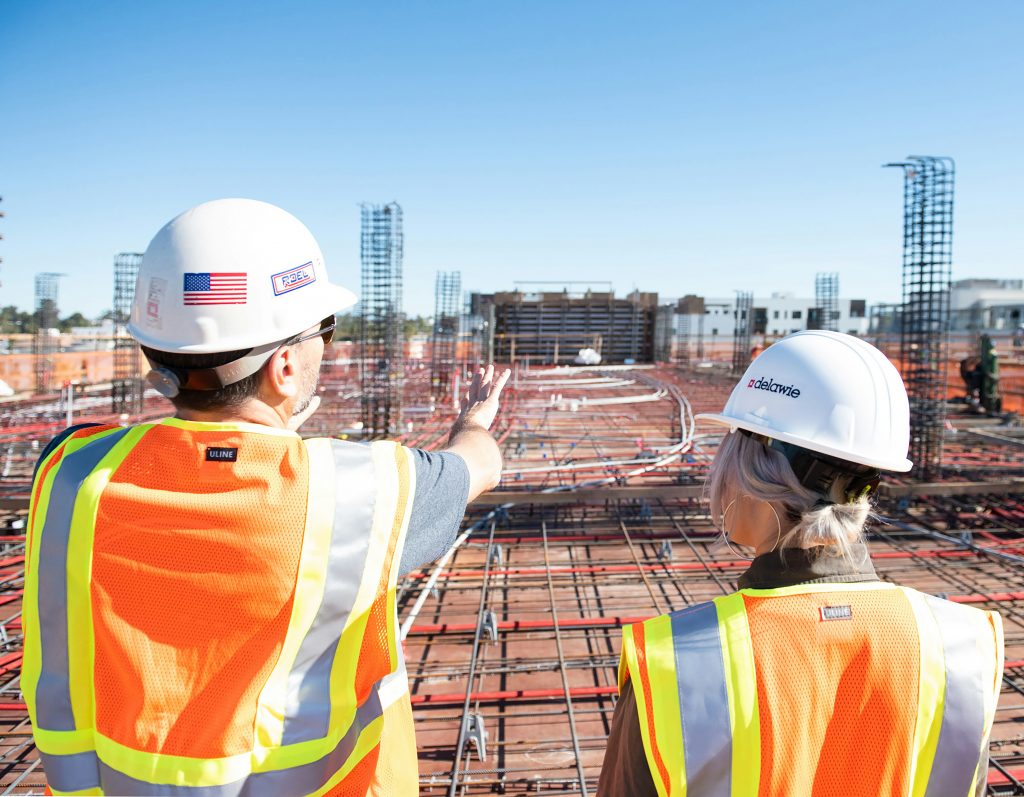Construction sites are often bustling hubs of activity, with numerous workers, valuable equipment, and materials present. However, their open nature and transient operations can make them vulnerable to security threats such as theft, vandalism, and unauthorized access. Implementing robust security measures is a pillar to safeguarding construction site personnel, assets, and property. This comprehensive guide will explore essential security tips and best practices to enhance safety and protect construction sites from potential risks.

Surveillance Systems
Install comprehensive surveillance systems to monitor activity and deter criminal behavior on the construction site. Deploy a combination of security cameras, motion sensors, and alarms at strategic locations to provide comprehensive coverage. Ensure that surveillance cameras have sufficient resolution and coverage to effectively capture critical areas of the site. There are now mobile CCTV towers that can be deployed to provide temporary surveillance coverage in areas without fixed infrastructure. These mobile units offer flexibility and can be moved to different locations to address evolving security requirements. Additionally, consider integrating surveillance systems with remote monitoring capabilities to enable real-time monitoring and response to security incidents. Regularly review surveillance footage to identify any security breaches or suspicious activity, taking appropriate action in response.
Perimeter Security
Establishing a secure perimeter is a construction site’s first line of defense. Sturdy fencing should be erected around the site to deter unauthorized entry, and boundaries should be clearly marked with signage indicating restricted access. Consider using barriers such as concrete blocks or bollards to prevent vehicular access. Regularly inspect perimeter fencing for any damage or breaches and promptly repair them to maintain security integrity. Implementing regular patrols along the perimeter can help deter intruders and detect any suspicious activity promptly. Collaborating with local law enforcement agencies to have a presence or conduct occasional checks can further enhance perimeter security and provide peace of mind.
Access Control
Implement strict access control measures to regulate entry and exit from the construction site. Limit access points and install access control systems such as gates, turnstiles, or keycard readers to monitor and manage personnel access. Issue identification badges or access cards to authorized personnel and enforce strict protocols for checking credentials. Regularly review access logs to identify any unauthorized attempts to enter the site and take corrective action as necessary. For enhanced security and accountability, consider implementing biometric authentication systems, such as fingerprint or facial recognition technology. Conduct regular training sessions for personnel on access control protocols and emphasize the importance of safeguarding access credentials. Implement backup access procedures in case of system failures or emergencies to ensure the continuity of site security measures.
Lighting and Equipment Security
Adequate lighting enhances visibility and deter unauthorized activity during nighttime hours. Install bright, energy-efficient lighting fixtures throughout the construction site, focusing on entrances, exits, and vulnerable areas such as storage and equipment yards. Consider using motion-activated lights to conserve energy while providing instant illumination in response to movement. Regularly inspect and maintain lighting fixtures to ensure optimal performance and coverage.
Construction equipment and machinery represent valuable assets that thieves often target. Implement measures to secure equipment when not in use, such as locking equipment cabins, removing keys, or immobilizing machinery. Mark equipment with unique identifiers such as serial numbers or tracking devices to facilitate recovery in the event of theft. Encourage workers to report suspicious activity or individuals observed near equipment storage areas.
Also, thieves often target construction materials and tools due to their high resale value. Implement secure storage measures such as lockable containers, cages, or sheds to protect materials and tools from theft and damage. Store high-value items in a central location within the site and monitor access closely to prevent unauthorized removal. Consider using inventory management systems to track materials and tools and detect discrepancies or losses quickly.
Personnel Training and Awareness
Educate construction site personnel about security protocols, procedures, and the importance of vigilance in maintaining site security. Conduct regular training sessions, raising awareness about common security threats and best practices for preventing unauthorized access and theft. Encourage workers to report any security concerns or incidents promptly and provide them with channels for reporting suspicious activity anonymously. Foster a culture of security awareness and accountability among all personnel on the construction site.
Involve workers in developing security protocols and procedures to ensure their buy-in and active participation in maintaining site security. Provide ongoing refresher training to reinforce security awareness and update personnel on any changes or improvements to security measures. By effectively empowering personnel with the knowledge and tools to recognize and respond to security threats, construction sites can create a safer and more secure environment for everyone involved.
Emergency Response Plan
Develop and implement a comprehensive emergency response plan to address security incidents, accidents, or natural disasters on the construction site. Establish clear procedures for responding to security breaches, including notifying authorities, securing the site, and coordinating with law enforcement agencies if necessary. Conduct regular drills and simulations to ensure personnel are familiar with emergency procedures and respond effectively in high-pressure situations.
Collaboration with Law Enforcement
Foster collaborative partnerships with local law enforcement agencies to enhance security measures and deter criminal activity on construction sites. Share relevant information about security threats or incidents with law enforcement authorities and coordinate joint patrols or surveillance efforts as appropriate. Establish open lines of communication to facilitate rapid response to security incidents and leverage law enforcement resources to investigate and prosecute offenders.
Regular Site Inspections
Conduct regular inspections of the construction site to identify and address potential security vulnerabilities proactively. Inspect perimeter fencing, access control systems, surveillance cameras, lighting fixtures, and equipment security measures to ensure they function correctly. Document any security issues or deficiencies observed during inspections and prioritize corrective action to mitigate risks effectively. Incorporate site inspections into the routine operations of the construction site, assigning designated personnel or security teams to conduct regular checks. Utilize checklist protocols to ensure thoroughness and consistency in identifying and rectifying security vulnerabilities, promoting a proactive approach to site security management.

Securing a construction site requires a multifaceted approach that addresses perimeter security, access control, surveillance, lighting, equipment security, personnel training, emergency response planning, collaboration with law enforcement, regular inspections, and secure storage of materials and tools. By implementing these essential security tips and best practices, construction site managers can enhance safety, protect assets, and mitigate the risk of security incidents, ensuring successful project completion and minimizing disruptions. Prioritizing security measures not only safeguards personnel and property but also enhances the reputation and credibility of construction companies in the industry.











